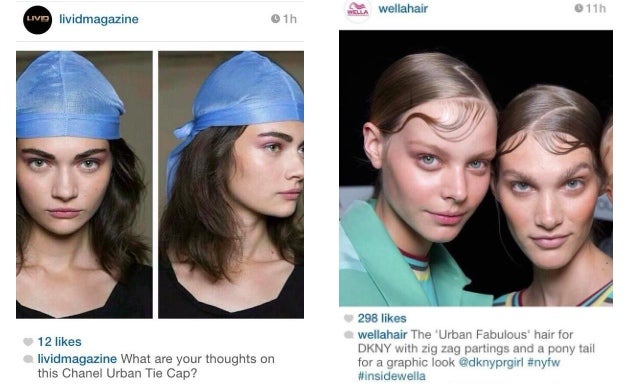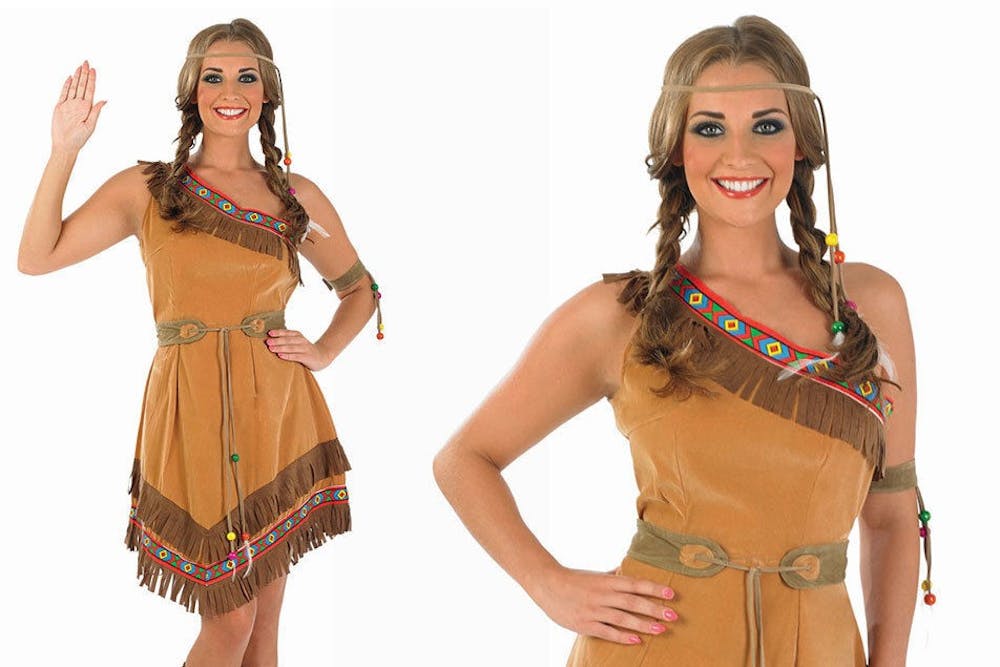With all of the attention in the media surrounding social issues, cultural appropriation has become a hot button topic, dividing friends and retrenching enemies alike. This is a subject I've wanted to tackle for a while but, for some reason, the words just wouldn't come.
Well, guess what? They're here now, so let me break it down for you.
From African American corn rows and Japanese kimonos to Cinco De Mayo parties and Indian or South Asian henna tattoos, we have all been a little bit responsible for appropriating cultures that are not our own. With Halloween quickly approaching, it's even more important to be sensitive to the cultures of others.
One of the biggest complaints and arguments against cultural appropriation is that the U.S. is an increasingly diverse place and it's impossible to not somehow influence and be influenced by the cultural aspects of others. This is all true. In fact, I doubt that life would be much fun if we lived in a box and refused to learn about and explore the lives of others.
However, people don't usually criticize cultural appropriation when it is a simple exchange or influence of culture. Behavior is categorized as appropriation when "members of rich and powerful majority cultures" take aspects from "disadvantaged indigenous and minority cultures" and claim it as their own. To rub salt in the wound, these taken cultural qualities tend to be things that members of an oppressed, minority group have faced criticism and mocking for doing or wearing.
I firmly believe there is a difference between appreciation and appropriation. I do believe that it is possible to partake in certain aspects of a different culture without abusing it. I don't approve of accusing any person I see of appropriation because I don't know their intent or the situation.
Are you getting a henna tattoo because you connected with an Indian or South Asian woman at First Friday and wanted something to remember her by? Did you pass by a traditional Japanese market, see a kimono and buy it, thus giving money to those of that culture? If so, I would probably sort you under the appreciation category rather than appropriation.
Or did you buy your kimono from Urban Outfitters to make a fashion statement? Do you want a henna because you saw Vanessa Hudgens at Coachella with one? The difference is the intention; one has taken the time to understand and show respect to another culture while the other simply thinks it's "cute."
My mom is attending her best friend's traditional Nigerian wedding pic.twitter.com/bjgwv5M9sA
— maiu$ (@maaiiuuss) May 9, 2015
This is also Cultural Appreciation, Not Imitation. It's not a "minority only" thing. Respect is respect. Beautiful. pic.twitter.com/9TnPhTHHlm
— Young C.huddles (@CeeWorlds) October 12, 2015
Kylie Jenner found herself in hot water in July when she was called out by actress Amandla Stenberg for posting pictures of herself in cornrows, a hairstyle with African ancestry. Many people came to attack her as well as defend her.
"If white girls can't wear cornrows then black girls shouldn't wear weaves," hundreds tweeted from behind the safety of their phone screens and gated communities. "It's just hair!"
Here's the problem with that argument. First, black women are not the only race of women who wear weaves. Weaves, extensions, clip-ins, whatever you want to call them are popular among women of various racial and ethnic backgrounds. Second, women that wear weaves typically do so either as a protective style or to achieve a different hair length. Hair length is not specific to a certain culture.
The length of your hair depends primarily on maintenance and care. Although some races are known to have certain hair types, a woman of any racial background can have long hair. So as an African American woman, if I wear a weave, I'm not appropriating any culture because long hair is not specific to any culture.
On the contrary,cornrow braids are indeed specific to several African cultures. As a traditional African braiding style, cornrows date all the way back to 500 B.C. Clay sculptures and paintings can be found from the Stone Ages of warriors and kings wearing corn rows throughout the Sahara, North Africa, the Horn of Africa and more.
But it's not just about the hair. What truly makes this sting is that when a Black woman wears cornrows, dreadlocks or other natural styles, she's called names, ostracized and discriminated against. There have been several reported cases of black women even being fired for their hairstyles. Yet when a white woman wears these same styles, it's deemed cool and edgy. The fashion industry is notorious for taking styles of other cultures and acting as though they are brand new trends (i.e. an "urban tie cap," also known as a durag)

However, this isn't to place the blame of appropriation solely on white people. Although appropriation is primarily distinguished when a group in a position of power takes from an oppressed group, we are all somewhat guilty of this behavior. There are so many cultures that we overlook when we think about appropriation.
I have kimonos that I've worn without even realizing that I might deeply offend a Japanese person who holds this garment with respect. I've dressed up as Pocahontas without understanding that I might disrespect a Native American who is reminded of the atrocities committed against their ancestors rather than the cutesy, sing-a-long Disney movie.
Yet I've also learned how to appreciate other cultures. I've made sugar skull candy with Mexican American friends in honor of Día de los Muertos, a Mexican holiday to honoring and remembering those who have died and gone on. I've been asked to be a dama in a quinceañera, a Latin-American coming-of-age celebration for a girl's 15th birthday.
So how do you avoid offending someone? I think the best strategy is just to be thoughtful and sensitive. Put yourself in the other person's shoes. Think of how your choices might hurt someone else. Don't be afraid to ask. No one is perfect; we're all bound to slip up here and there. If you're not sure whether or not your behavior is offensive, ask a friend of that cultural group what they think. It might take a little extra time, but it's worthwhile.
Related Links:
ASU's Project Humanities educates on cultural appropriation
The cultural ideas in Old Town are as antiquated as the area itself
Reach the columnist at nlilley@asu.edu or follow her on Twitter @noelledl_
Editor’s note: The opinions presented in this column are the author’s and do not imply any endorsement from The State Press or its editors.
Want to join the conversation? Send an email to opiniondesk.statepress@gmail.com. Keep letters under 300 words and be sure to include your university affiliation. Anonymity will not be granted.
Like The State Press on Facebook and follow @statepress on Twitter.




